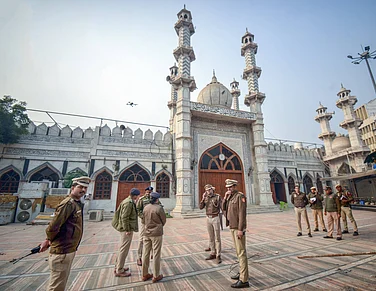Translation is a delicate matter. To iterate that it involves knowledge of two languages is a no-brainer. What’s more important is that this obvious “qualification” of “knowledge of two languages” is clearly not enough. Especially when it involves what is designated as a “literary” text. Meaning of a text is constructed at two levels: the connotative and denotative.
Denotations are the literal meanings that can be accessed through dictionaries, connotative meanings, on the other hand, arise from what words connote and, therefore, rely on deeper knowledge of the language. Literary translations are challenging precisely in that they rely on connotative meanings and figurative language. Sometimes translators need to look at the whole constellation and not just the star: a silent night sky of significance/extended meanings/ingested cultural meanings to fully operate between two languages. So it is ideal that the translator understands both, not only with a felicity but with an intimacy of an insider.
When Geeta Dharmarajan founded Katha in 1988, one of the key points in her manifesto was to set up a publication firm that would facilitate translations of literary texts from and among the many bhashas of India, besides into English. Sahitya Akademi, too, has facilitated this exchange amongst Indian languages since its inception post-Independence.
In more recent times, Rohan Murty has filled that space most ardently with the Murty Classical Library of India in bringing up the line of translated Indian classics by the best known international names in the field.
India being a multilingual country, it is ideal that a constant exchange of literature takes place between languages. That would lead to a greater “understanding” of spaces, India being a unique country in that most of our states were originally carved on the basis of language and each coming with an established literary tradition. South Asia also has the distinction of the succession of an entire nation (Bangladesh) from its parent country on the basis of language. So there are ample signs that language is a grave matter here.
The creative effort made towards serious translations between languages, thus, create a wholesome exchange and is one teeming with endless possibilities. Translations from regional languages to English expand the scope of the book in one go and with that is linked to the larger politics of language. Like with Daisy Rockwell and Geetanjali Shree collaborating on Tombs of Sand, the ambit of the text widens to an international readership owing to translation.
Since literary texts, by definition, are not fixed compositions, they enclose a cultural, symbolic and figurative significance. This is where challenges for a translator abound. It can be daunting to recreate a cultural experience into another language. What is stated as a matter of fact for everybody to understand in the original, is sometimes made into a description akin to a glossary.
So Mulk Raj Anand (one of the trinity of Indian writing in English, along with Raja Rao and R.K. Narayan), shows a certain awkwardness in translating salwar as a “loose trousers held with a string” in The Untouchable (1935). But a lot of water has flowed under the bridge since then. Writers today would dispense with such tedium and use the cultural word for what it is, salwar.
In a world today where we are more exposed to experiences of other disparate cultures, we might choose to use original words for cultural items and kinship terms and cooking rather than translate them into oddities that shift the meaning, thereby sounding stilted and awkward, besides puncturing the flow in critical places. But then, there are no fixed rules that can be held out as a talisman. Every single situation calls for a judgement and a decision. Depending upon the suitability of the context, the translator decides upon the ground rules. But really, such decisions are hinged upon the translator’s intimate knowledge of not only the language but also importantly, the language communities s/he deals with.
Literary texts also carry an aura of earlier literatures available in those languages. So when we do a reading of Mujh Se Pehli Si Mohabbat by Faiz in the classroom, the famous nazm that was a watershed in the history of Urdu poetry, one is dealing not only with the black marks on paper that have to be paraphrased but the nazm’s comprehensive significance, complete with the embedded meanings, secondary references and tertiary signification that it precariously carries on its frail shoulders. So my Hindustani-knowing class is never satisfied with the translation alone and that is not a statement on the efficacy of translation at all.
While they accept Agha Shahid Ali’s translation at a cognitive level, at the level of the affective, the reading is not complete without bringing in the soft inflections of the original Urdu culminating in collective sighs and gasps. And that is the only way to complete the reading. They might not fully understand the Urdu, owing to another tragic political decision, but they do feel the nazm more completely once the Urdu version has been read out. It completes their experience of studying the nazm. They understand a more intimate romance flowing from their surroundings, connecting them to older generations—their grandparents, who could have very well known and sung it.
It connects them to popular renditions in Bollywood and its many spin-offs, given the fact that a whole generation of Urdu poets were inspired by Faiz in direct and indirect ways and inserted lines verbatim from this poem as a kind of tribute to the iconic nazm. Agha Shahid Ali had all the credentials of an ideal translator for Faiz: his impeccable Urdu, his poetic sensibility, his liberal ethos, and to stretch the point, even a teenage infatuation for Begum Akhtar that he claimed gave him a lifelong love of ghazal, and yet there are parts where his English translation does not do the trick.
It is not a lack of acumen, it is just the nature of language. In some ways it can’t be helped. He is mindful of this challenge himself and has modestly claimed to undertake the translation in the hope that “something can be borne across to English readers, even if a fraction” (Introduction to The Rebel’s Silhouette). This is when one would rate Ali as one of the finest translators of Faiz.
Sometimes, a common experience of reading a translation is a certain vacuum and emptiness. And that is not at the level of the translator not “getting” the poem. Words are all there, but the effect is elusive. Robert Frost goes to the extent of claiming that “Poetry is what is lost in translation”. So when the lines in English “...the sky wherever I looked, was nothing but your eyes” the class was mildly appreciative, but it took its Urdu equivalent, “teri ankhon ke siva duniya mein rakhha kya hai”, to have them swoon over.
So translation is no mean business. While it might have its flip side and share of unsatisfactory attempts, a less than perfect translation is better than no translation. More translations would lead to better translations in course of time. The fine ones would stick and take the translated texts into territories they would never travel in the original. A translation is a bridge. Let people cross over to the other side. More the merrier.


























